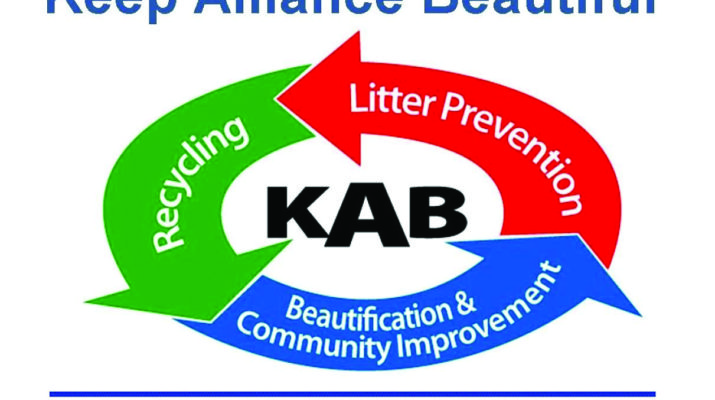Author’s Note: This is the second in a multi-part look at the Alliance Municipal Landfill.
A certain percentage of what we recycle at Keep Alliance Beautiful is trash, and, in turn, a small fraction of trash will not pass muster at the Alliance Municipal Landfill.
Bouncing a bit in the passenger seat as Landfill and Refuse Collection Foreman Clint Fankhauser gave me a tour, I saw firsthand where everything goes from baled solid waste to last fall’s composting leaves. Components of the former may last nearly forever before breaking down and tons of the latter could end up in area gardens or landscaping within weeks. So, exactly what and how much does the landfill process throughout a year?
Overall, as previously mentioned, Clint reported 13,927.7 tons as the 2023 volume. He said I could contact McKenna at the Municipal Building offices for amounts by category. I stopped by the finance department to request the most current numbers. McKenna and Amy, both clerks in that second-floor office, located just what I had in mind then printed a hard copy that covered everything welcome in our landfill. Importantly, their total of 15,489.22 tons did not match Clint’s because the “Material Analysis Report” generated this past October is for the fiscal year, Sept. 1, 2022 – Sept. 30, 2023, rather than calendar year.
Calendar or fiscal, take your pick, that is a bit more than a ton of refuse for each person in Box Butte County (based on a 10,842 population in the 2020 U.S. Census). It is interesting to see what was in the mix on the fiscal year (FY) list. Two of the smallest entries on the first page bring back memories from growing up in the country. One ticket accounted for the entire ash entry – .14 tons of burn barrel ashes. Our family, neighbors and two-classroom schoolhouse teachers all burned trash in the ‘80s when trips to “the dump” were reserved for serious cleanup or demolition. Another ticket listed .15 of a ton of baled hay, or what could have been found along our county road driving into school on a morning during harvest.
An assortment of materials – not squeezed in the hulking baler – measured in the hundreds to more than a thousand tons, respectively. Brush (incl. branches/trees), tipping the scales at 853.75 tons, was more than KAB recycled for the same period. Keeping lawns and gardens maintained outside of winter brought 1,362.5 tons of grass clippings and 402.59 tons of leaves.Great, jagged chunks of concrete awaiting the crusher were among loads tallied on 1,598 tickets as part of 1,704 tons of construction/demolition (C&D). Shingles, 407.66 tons total, or 2.74 on average per load, also earned a separate category. Nearly 600 tickets (1,216.62 tons) were simply for “non-baleable” municipal solid waste.
“We don’t bale construction materials, metal, mixed loads – dirt/trash/construction, pretty much anything that’ll destroy the baler – all goes to the loose fill pit (which is) compacted manually with heavy equipment.” Clint said. A burn box incinerates all the branches. Yard waste goes to the compost pile for eventual sale. “We use it to amend the soil on the hill to promote growth, also helps prevent erosion once we get things going.”
For rules and regulations that govern landfill operations, “We work with Nebraska Department of Environment and Energy (NDEE), that’s the main one,” Clint said, adding that they also “consult with an engineering firm on a lot of things.”

